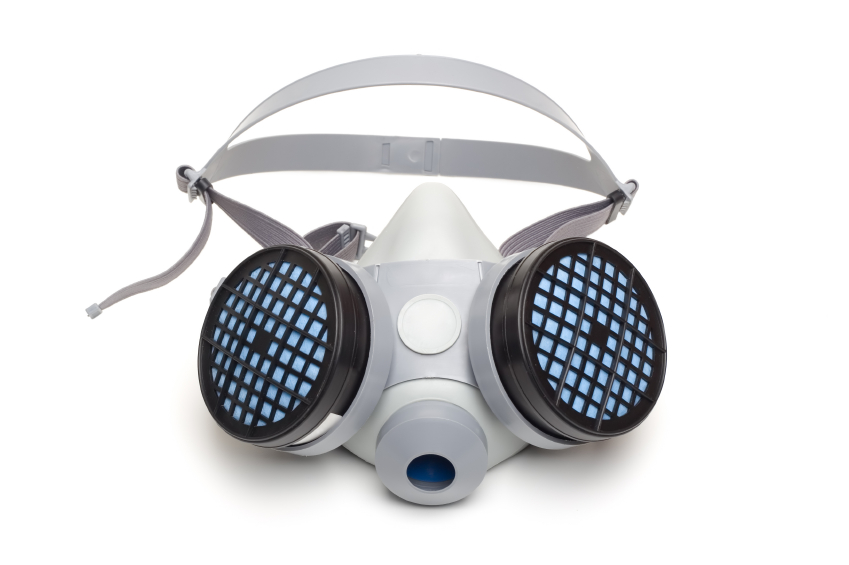
|
Do you need a particulate respirator, a gas/vapor respirator, or a combination gas/vapor and particulate respirator? Can you put workers in an air-purifying respirator that filters out contaminants, or is the air so contaminated—or so oxygen-deficient—that workers need supplied-air respirators? Are your workers medically capable of wearing air-purifying respirators, or do workplace and employee factors make loose-fitting hoods with an air supply a better choice? Will workers be wearing respirators every day, only for specific tasks, or only in emergencies? Keep reading to learn what factors you should consider.
Respirator Risk Assessment
There’s a lot to account for when you’re choosing a respirator, including:
The type of hazard. Respirator selection will depend heavily on what kind of airborne contaminants your workers are exposed to.
What’s in the air? Is it:
- Biological contaminants, like tuberculosis (TB) or mold?
- Particulates, like crystalline silica or asbestos?
- Radioactive particulates?
- Fumes, like respirable metal particulates formed during welding?
- Mists, like acid mists, oil mists, or paint mists?
- Gases, like oxygen, nitrogen, or acetylene?
- Volatile organic compounds (VOCs), like solvents?
- Oxygen-deficient? Oxygen concentrations below 19.5 percent can be deadly.
- Multiple contaminants? An atmosphere can pose more than one type of hazard.
- Emergency releases? A hazardous atmosphere created by a chemical release requires a different respirator strategy than other types of exposures would.
Join us on Wednesday, September 30, for our in-depth webinar, Respiratory Protection Strategies: PPE and Training to Minimize the Safety Risk of Potentially Harmful Agents
The concentration of the contaminants. Depending on the type of respirator and how much coverage it provides (e.g., quarter mask, half mask, full-face mask), a respirator is given an assigned protection factor (APF), that employers can use to calculate the maximum use concentration (MUC) for the respirator. The MUC for respirators is calculated by multiplying the APF for the respirator by the permissible exposure limit. The MUC is the upper exposure limit at which the class of respirator is expected to provide protection. Employers must ensure that employees’ respirators meet or exceed the required APF and MUC for the hazards they are exposed to.
You have to either measure or make a reasonable estimate of the contaminant levels you expect workers to be exposed to. This can be affected by:
- The work environment—Chemicals like trichloroethane can quickly accumulate in an enclosed spaces.
- The available controls—Where ventilation is available, contaminant levels will be lower.
- The contaminant—When you’re dealing with particulates, for example, you’ll need to have an idea what respirable fraction is.
If you do not measure exposures, and if you cannot make a reasonable estimate of potential exposures, the Occupational Safety and Health Administration (OSHA) requires you to treat the atmosphere as if it is immediately dangerous to life or health (IDLH), which will also affect your respirator choice. Air-purifying respirators are not suitable for use in IDLH atmospheres.
Workplace factors. The workplace itself may affect your respirator selection. You’ll need to consider:
- Sizing and layout. Some types of respirators, especially self-contained breathing apparatuses, may be impractical in a tight space—for example, in a confined space.
- Obstructions. In work spaces with a lot of sharp edges and obstructions, air-line respirators may not be dependable.
- Heat, humidity, and workload. Because respirators create a physical burden for workers, it’s important to account for the effect that heat, humidity, and workload will have on workers wearing respirators.
Safety managers must carefully evaluate whether certain jobs require respirators, and then develop and implement a respiratory protection program that effectively protects those workers. Click here to learn more!
Worker factors. Your respirator selection may also depend, to some degree, on the workers who will wear them. You’ll want to consider:
- Worker size, which can affect what brands of respirators you make available to workers—some will fit smaller workers better, some will fit larger workers better.
- Worker health.Workers with certain health conditions may not be able to wear air-purifying respirators, which make greater demands on the body.
Once you’ve done a thorough evaluation of these factors, you can plug them into a respirator selection tool—for example, OSHA’s Advisor Genius or the l’Institut de Recherche Robert-Sauvé en Santé et en Sécurité du Travail’s (IRSST) support tool for choosing respiratory protection against bio-aerosols—and choose the type of respirator that will best protect your workers. You can also download BLR’s Assigned Protection Factor Table for an easy-to-use reference.
